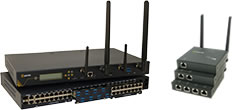
DARPA working to develop event-activated IoT batteries
By Max BurkhalderJune 19, 2017
The U.S. military has begun integrating technology associated with the Internet of Things into operations here and abroad. Unmanned aerial vehicles now hover above battlefields, collecting intelligence and engaging enemy combatants, the Center for Strategic and International Studies found.
Equipment sensors monitor crucial mechanical assets tucked away in aircraft carriers and other large-scale defense assets. Augmented and virtual reality devices help service members prepare for the realities of combat. IoT devices are well integrated into modern defense operations.
Adoption is likely to intensify. Between 2011 and 2015, the U.S. government spent more than $35 billion on IoT technology, a significant portion of which administrators earmarked for defense purposes, according to research from Govini. This level of investment is likely to grow as IoT usage within the military increases.
However, the drive to innovate has come with unique challenges - most notably, power consumption. Overall energy use within department has dropped in recent years, according to the U.S. Energy Information Administration. The problem is instead tactical in nature: How can the military make sensors and other IoT technology less dependent on state-of-the-art battery systems?
The Defense Advanced Research Projects Agency is looking into the problem via the Near Zero Power RF and Sensor Operations program. Research teams participating in the project, called N-ZERO for short, intend to develop wireless sensors that power up only when needed, facilitating savings on energy costs and extending the life spans of essential electronic equipment.
"It is the waiting for a specific event or activity that constrains mission life and drains the battery energy of these essential electronics," Troy Olsson, program manager for DARPA, explained in an organizational press release. "By cutting reliance on active power and enhancing battery life, N-ZERO aims to enable wireless, ubiquitous sensing that is energy efficient and safer for the warfighter."

Signaling IoT change
How do Olsson and his colleagues intend to meet the lofty goal of developing and deploying event-based IoT sensors? Signal signatures. DARPA envisions a future in which such sensors passively watch over the battlefield, utilizing the lowest amount of power possible until a specific event - say the arrival of an IoT-equipped troop transport with a precoded radio signature - fully activates their electronic circuits.
"Our goal is to use the right signal itself to wake up the sensor, which would improve sensors' effectiveness and warfighters' situational awareness by drastically reducing false alarms," Olsson said.
This innovation would drastically cut down on power consumption while also keeping service members on the frontlines safe. In the end, DARPA hopes to develop devices that use only 10 nanowatts of energy, roughly the amount needed to run a standard wrist watch.
This will be no easy task, as the average state-of-the-art sensor uses 1,000 times more power. The agency will center its initial efforts on streamlining sensor technology that includes acoustic, electromagnetic and radio frequency capabilities.
These efforts would not only open up new opportunities for the military but also move sensor technology forward, as a whole, FedTech reported.
Based on existing solutions
While the N-ZERO program holds revolutionary potential, the idea at its center is not necessarily new. Low-power wide-area network fixtures used in the telecommunications space work off the same concept, self-regulating their activities to conserve power, according to IoT For All. N-ZERO has added an extra operational variable to the equation, demanding that sensors continue to monitor their surroundings while also having the ability to enter go dormant.
"Low-energy sensors would drastically cut down on power consumption while also keeping service members on the frontlines safe."
Development phases continue
N-ZERO is a three-part initiative. The first stage, which wrapped in December of last year after 15 months, saw the successful production of a sensor that uses less than 10 nw of power, the Armed Forces Communications and Electronics Association reported. DARPA had originally planned for to detect an RF signal of 60 decibel-milliwatts after the first phase.
However, the sensor is much further along in the process and can now detect a signal less than -70 dwB in strength, a measure that surpasses the phase two target of -80 dwB. By the end of the final stage, the device should be able to register an RF signal of -100 dwB. Each phase also includes targets for detection accuracy.
While these advancements may stoke excitement among those involved with N-ZERO, the project is not likely to result in a usable device ready for the battlefield, according to Olsson. Competitors in the private sector are producing sensors with equally impressive low-energy transmission capabilities. Some have even outperformed the DARPA-produced sensor, registering impressive signaling ranges that go above and beyond the agency's current capabilities.
However, this does not mean the program has failed. As always, the agency will have spurred innovation in the private sector that translates perfectly to governmental applications.
As the push create revolutionary IoT technology fit for the battlefield continues, Perle will be there to facilitate the connective backbone needed to power connected fixtures in the field and on base. In the past, we have partnered with multiple branches of the armed forces, including the Air Force and the Coast Guard, to build networking infrastructure that streamlines critical defense operations. Connect with us today for more information about our work in this area.



